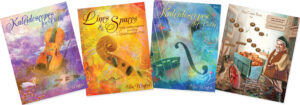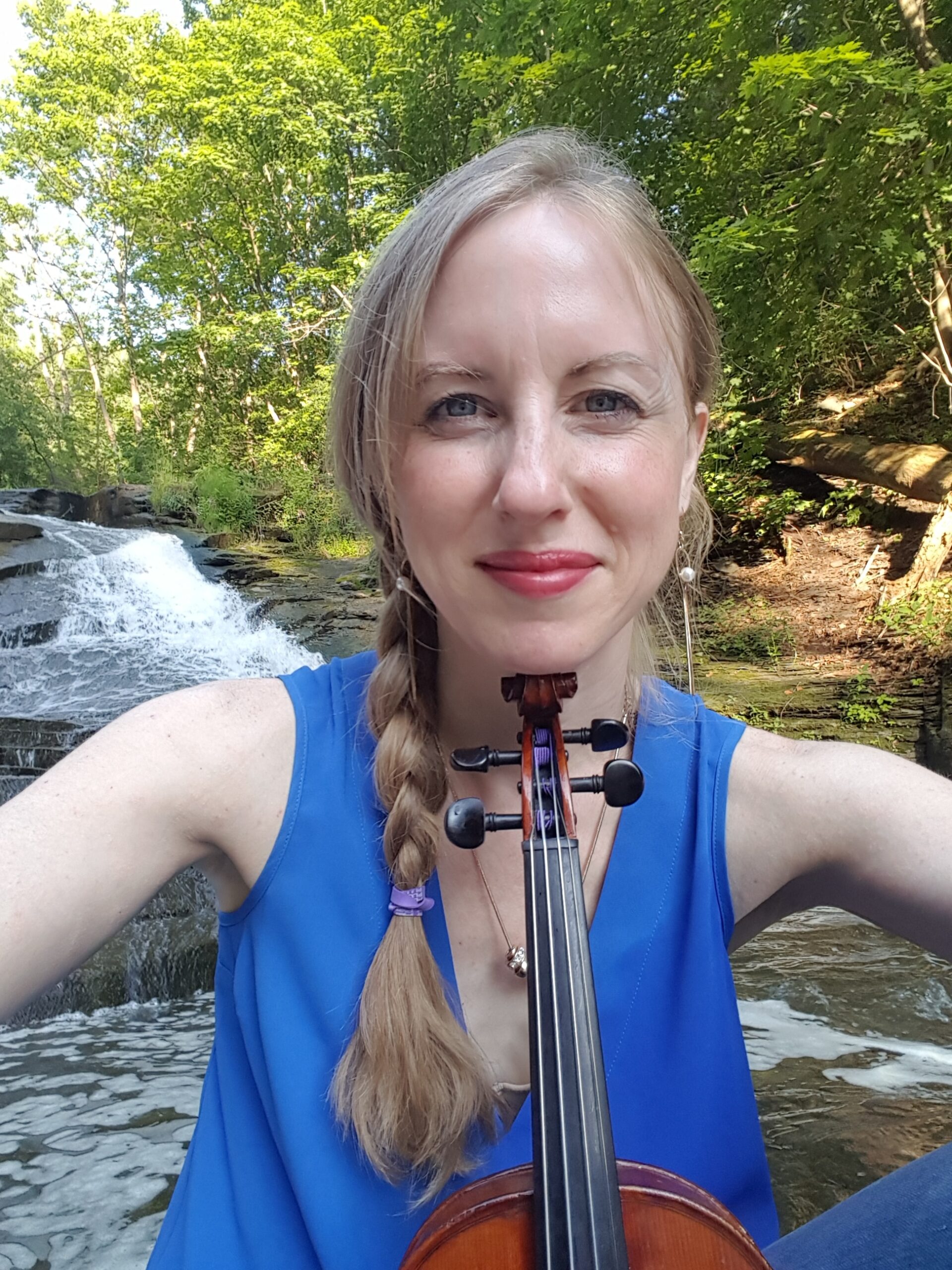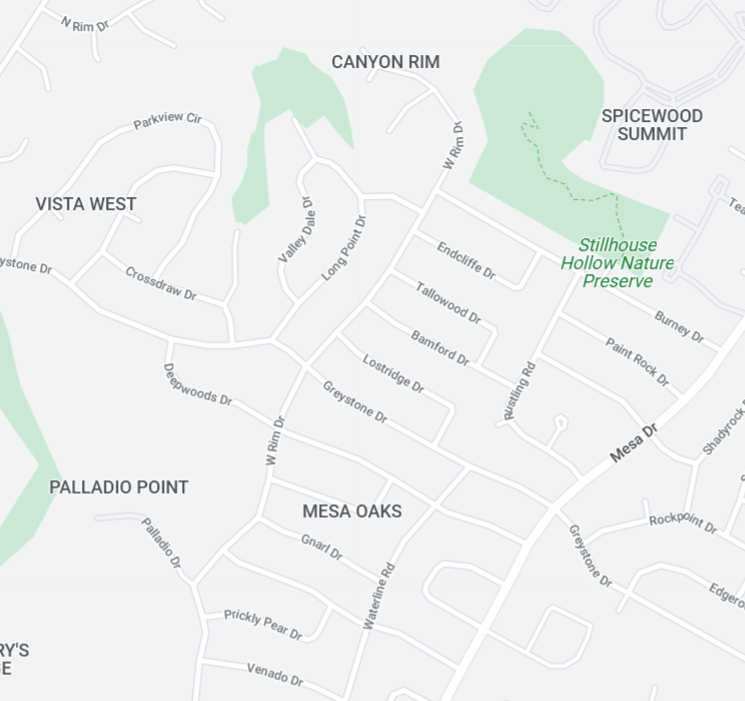Staccato seems like a very basic skill. For Suzuki teachers, it is one of the first strokes we teach.
Yet, why is it that “beginner staccato” most often consists of legato with jerks on the bow changes?
I’ve witnessed this bowstroke over and over … even in the studios of many otherwise excellent teachers.
This jerky legato is surprisingly persistent. Long after the student graduates Twinkle, the stroke may make encore appearances in Perpetual Motion, Allegretto, and Etude — unless the teacher gives up outright and teaches these songs legato. It can even be observed in many a Bach Double, a full three books later.
Kaleidoscopes for Violin
Summer Session
TEACHER TRAINING

Teaching balance, movement, and tonal understanding through guided discovery
The problem with staccato is twofold:
- The stroke is more complex than it seems.
- The way we’re teaching it often leaves students with vague impressions and lacking in necessary detail … even with significant time devoted to the effort.
Surely teaching staccato shouldn’t be this hard. Where are we going wrong?
Pedagogical Pizza Delivery
The way we often teach staccato is the way we teach many things: 1) modeling (augmented by metaphorical language); and 2) imparting information.
These are both variations of didactic teaching.
While didactic teaching is efficient for many things, its limitation is that from the student’s side, it’s largely a passive process.
As teachers we often conceive our value as neatly organizing the skill or knowledge, then delivering it to the student in a well-sequenced, neatly packaged format.
However, this is basically a pedagogical version of pizza delivery. We do most of the “figuring out” work, then we “deliver” the product of our mental work to the student. The student “consumes” this package, often having little awareness of the ingredients or process of making it.

Didactic teaching is often enough to produce a good result in the moment. The problem arises when the student gets home and tries to replicate the result.
Now, perhaps they did genuinely understand the content. In this case they will have no problem. However, if they understood the content only vaguely or partially, the gap shows up when they begin practicing on their own.
For example, let’s say we demonstrate staccato and describe the sound as “little balloon pops.” Juxtaposed with our skillful demonstration and feedback, our student achieves a good staccato in lesson. However, two days later, they have forgotten both the metaphor and accompanying explanation. What remains is a vague memory of sudden bursts and an energetic arm.
Based on this inaccurate gist, the student strives to move their arm explosively and energetically as they practice. The result? That jerky legato stroke we’ve all seen, which my childhood teacher nicknamed “yankato.”

Kaleidoscopes Book 1 Workshop
The Well-Rounded Twinkler
July 11-22, 2022 • Live online course
Create more delight for your young players!

More Pizza Delivery
So what is the solution? Send the student home with a video?
Well, maybe. But this method has limitations, too.
First, how many students have the skill and awareness to recapture a good staccato stroke, simply from the video demonstration? Not many … and these are probably the students who didn’t need the video in the first place.
The remaining students can hear the sound but don’t know how to get there.
But there is a deeper problem … which is that the student is still dependent on you … in video version. In other words, it’s still pizza delivery.
This problem compounds over time, becoming all too clear as they are advanced enough to learn music on their own. Having relied on a steady stream of didactic instruction from you, they feel overwhelmed when trying to figure out a piece from scratch. These are the students who come in and ask, “Can you show me how to play this?”

The gap also becomes evident when the student must interact with the knowledge in a creative way … for example, tutoring a student a few years younger than themselves. This skill should be within easy reach for a student who has good understanding and discernment.
A student who has received only didactic instruction, though, while they have a vague perception of some flaws in their younger colleague’s playing, is stumped (and tongue-tied) when they try to explain what’s wrong. They resort to demonstrating over and over again, while the younger student tries repeatedly to guess what is being communicated.
Navigating a New Neighborhood
To unlock our students’ full potential, didactic teaching must be complemented with a VERY different method — one which gives students a more comprehensive grasp of new ideas. This method is something I might call “guided discovery.”
Below I’ll give you an example of teaching staccato using guided discovery. But first I want to give you a sense of why this approach is absolutely essential, using an example from daily life.
Imagine your best friend has just moved to an unfamiliar neighborhood.
Google Maps gets you there the first few couple times you visit. One day, though, having gone there several times already, you feel confident that you know the way, and head over without loading the map.
Fifteen minutes later you’re on your friend’s street. At least, you thought this was the street. But everything looks … a little … unfamiliar. Isn’t their house supposed to be … right here?

It turns out there are two streets with similar landscaping on the corner, and you turned on the wrong one.
The following week you come from a different direction, and discover that two adjacent streets have similar names.
None of this awareness arises as Google Maps flawlessly navigates for you. These misconceptions and discoveries arise only when you turn off the navigation system and begin truly interacting with the environment. Only after a variety of such insights can you say that we have a true understanding of the neighborhood.

Kaleidoscopes Book 1 Workshop
The Well-Rounded Twinkler
July 11-22, 2022 • Live online course
Create more delight for your young players!

Guided Discovery: Asking Useful Questions
As we teach staccato using guided discovery, we’ll begin as usual by modeling a perfect staccato.
But now, instead of “teaching” the student how to do the staccato, we’re going to linger in the observation phase. Specifically, we’re going to ask them to tell us what they’re seeing, in minute detail.
The conversation varies somewhat depending on the individual student’s personality, intellectual sophistication, and experience. Some students may need you to help them get started with “yes-no” or multiple choice questions. Others will benefit from truly open-ended questions, which offer greater challenge and test their observational skills.
But even if you have to provide LOTS of guidance to a given student as they go through this conversation, what’s important is this: Their brains are turned on, their senses are fully engaged, and they are doing at least some of the intellectual work.
Guided Discovery: Model Script
The script below shows a typical guided discovery staccato conversation. The teacher uses a “compare and contrast” framework, which is powerful because distinguishing what something isn’t often helps to clarify what it is. For purposes of this example, we’ll say this is a student who is 8 years old and in their second month of lessons:
Student: “The first one was faster, and the second one was smoother.”
Before we continue, notice that the student is confusing the emotional effect of staccato — more energy — with the technique used to produce it: Neither the tempo nor the bow speed was actually faster. This mixing of sensory information is normal, and is in fact central to the confusion that so often happens in home practice.
The teacher refrains from offering a correction, knowing that this will tend to discourage the student’s exploration:
The student is confusing the emotional effect of staccato — more energy — with the technique used to produce it: Neither the tempo nor the bow speed was actually faster.
Teacher: “Got it! I’m going to play it again. Tell me what else you notice.” [Again demonstrates staccato and legato.]
Student: “The first one used little bows, and it was more sticky.”
Teacher: “I love your observations! The first one did use less bow and sounded kind of sticky. Now, the interesting thing is [leans forward and makes eye contact] I actually can still do a good staccato even if I use lots of bow.” [Pauses and lets this sink in.]
“You see, this [plays several half-bow notes, well-separated] is actually still staccato, while this [plays legato sixteenth notes] is legato. [Pauses for effect.]
“So staccato is not actually about note length.” [Pauses again and watches the student’s reaction. The student tilts their head to think.]
Teacher: “I’m going to play staccato and legato again. There’s one difference you haven’t mentioned yet. Listen again and see if you can hear it.” [Demonstrates.]
[The student reflects for several moments, stumped. The teacher makes sure not to jump in during this pause; the intellectual challenge and mental effort are an important part of the experience.]
Teacher: “I’ll give you a hint. Listen between the notes.” [Pauses, letting these words sink in.] “I’ll slow it down a tiny bit.”
[Demonstrates both versions.]
Student: “Oooooh. There are stops.”
Teacher: “Great observation! There are stops!” [Plays just the staccato.]
Notice that so far, neither of the first two elements identified by the student (“fast” and “little”) is actually an essential feature of staccato. This is like trying to define the essential features of ice cream, and coming up with “vanilla” and “dairy” … but missing “cold.”
I’ll let you enjoy imagining what a student might create when they think that staccato means “little, fast bows.” But anyway — having successfully dodged that bullet, we might be tempted to celebrate victory.
But this would be premature. Because it turns out the word “stops” is a BIG problem.
Specifically, “stops” often implies suddenness. The note endings in staccato do seem immediate (emphasis on “seem”), but even more important, focusing on stops overlooks the MOST essential — and still undiscovered — concept.
“Now, there’s one tiny issue still. If I think ‘stops,’ I might accidentally play this:” [Plays a jerky, accented legato. The student makes a face, which the teacher acknowledges with a smile.]
“Okay, so now I’m going to play a better staccato. How is this one different?” [Demonstrates. The student thinks for a moment. The teacher plays again.]
Student: “Ooooh! There were spaces between the notes!”
Teacher: “Yes, exactly. There are PAUSES !” [Waits several seconds to this to sink in, holding the student’s gaze.]
“Our arm literally has to WAIT a moment before we move it again. And that’s actually the hard part about staccato actually, is that waiting time. Because our arms actually sort of like to just go back and forth.
“So I’m going to play it one more time, now that these ideas are more clear, and then it will be your turn.”
This final observation gives the student an opportunity to synthesize their detailed awareness back into an integrated whole. It also provides one final model before they try staccato for themselves.
Benefits of Guided Discovery
There are many benefits to the guided discovery conversations such as the above:
1. The student has extensively studied the bowstroke throughout the discovery process. This interactive observation increases both their analytical ability and their final understanding.
2. Having arrived at the final insight, the student now “owns” this knowledge. They will be much more invested in remembering it, because they earned the insight through their hard work.
3. The student has an experience of using their own intellect to generate and test hypotheses. In the process, they gain practice with inductive reasoning — i.e. synthesizing observations into understanding.
5. They have experienced the teacher being interested in their ideas and respecting their intellect, and through this reflection, learn to trust their own intelligence and creativity.
6. Such collaborative interactions over time nurture students’ curiosity and autonomy … in contrast to following directions, which (if this mode predominates) tends to engender passivity.

Kaleidoscopes Book 1 Workshop
The Well-Rounded Twinkler
July 11-22, 2022 • Live online course
Create more delight for your young players!

Hiding in Plain Sight
There are many elements which make a good staccato. However, in my experience, the pause is the detail which is LEAST obvious — yet most critical.
Why is that?
Because our brains naturally focus on what is audible. We also focus on motion. The pause is “negative space” in both senses.
The hidden nature of the pause makes for a challenging puzzle and fun “aha” moment. Which is actually another important benefit of guided discovery — it is fun! Students love the process of discovering things.
This “negative space” element will continue to be challenging even after it’s been “discovered.” The student will need to consciously direct their attention into this negative space in order to “discover” whether their own execution includes these pauses. These attentional and reflective abilities are the beginning of self-observation and independent practicing.
Where Can We Use Guided Discovery?
In addition to teaching a new technique, you can employ guided discovery any time you want students to correct a technical flaw — for example, a messy string crossing, picking up fingers that should stay down, etc. As your students adapt to the new approach, you can introduce a guided discovery dialogue simply by modeling the incorrect and correct technique side-by-side. You’ll see a little sparkle appear in your students’ eyes, and they will immediately begin solving the new puzzle.
For more on guided discovery, please join me for the Kaleidoscopes Book 1 workshop this summer! We will go into much more detail on how this process is implemented across all aspects of playing: technique, tonality, rhythm, and more … as well as common pitfalls that teachers experience as they begin implementing these principles. Of course the workshop also covers all the elements of beginning violin technique and much more. You can register for the workshop here:
I look forward to hearing what opens up as you begin exploring this approach with your students!
